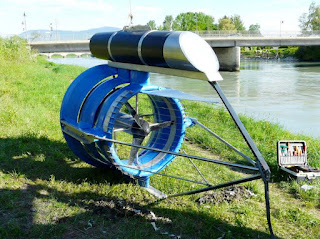You must have heard the name of the turbine by now, and when you hear the name of the turbine, you will see a picture of turbines that move with the wind. But there are different types of turbines, one of which is wind turbines, such as Hydrokinetic Turbine, Kaplan Turbine, Francis Turbine, Impulse Turbine. In this article, we will introduce several types of turbines.
Hydrokinetic Turbines
Hydrokinetic Turbines include clean sources of renewable energy that significantly reduce the carbon emissions of off-grid sites, especially when relying on diesel fuel.
Hydrokinetic turbines produce a base load for the microgrid power systems. The portability of the system reduces the need for costly infrastructure. read more

Francis Turbine
The Francis turbine is a type of water turbine. It is an inward-flow reaction turbine that combines radial and axial flow concepts. Francis turbines are the most common water turbine in use today and can achieve over 95% efficiency.
These turbines can be used for heads as low as 2 meters and as high as 300 meters. Additionally, these turbines are beneficial as they work equally well when positioned horizontally as they do when they are oriented vertically. more information

Kaplan Turbine
The Kaplan turbine is a propeller-type water turbine which has adjustable blades. It was developed in 1913 by Austrian professor Viktor Kaplan, who combined automatically adjusted propeller blades with automatically adjusted wicket gates to achieve efficiency over a wide range of flow and water level.
Main parts of Kaplan Turbine as follows:
- Scroll casing,
- Guide vane mechanism,
- Draft tube, and
- Runner blades

Impulse Turbine
Generally, Hydro turbines are classified into two groups based on how the energy is exchanged between the fluid and the turbine: impulse turbines and reaction turbines. Impulse turbines operate based on the change of velocity vectors. In general, the potential energy of the water based on the height of the waterfall is converted into kinetic energy by one or more nozzles and then water hits the turbine blades at high speed causing the turbine to spin and consequently generates electricity.
Impulse turbines do not require a pressure casement around the rotor since the fluid jet is created by the nozzle prior to reaching the blades on the rotor.

























